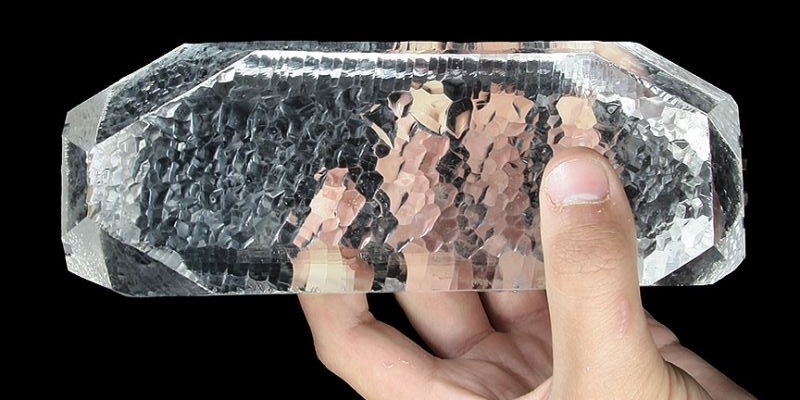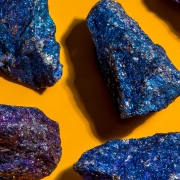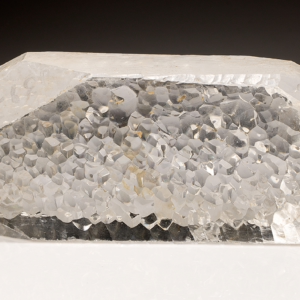Synthetic crystals
Synthetic crystals are artificial means that use various physical and chemical methods to simulate the conditions for the formation of natural crystals, so as to promote the arrangement of atoms, ions or molecules according to a specific lattice structure, so as to grow crystal materials with regular geometric shapes and specific physical and chemical properties. In addition to the synthetic crystals mentioned earlier, there are many types of synthetic crystals, such as synthetic ruby, synthetic sapphire, synthetic emerald and other gemstone crystals, as well as synthetic silicon carbide, synthetic gallium nitride and other functional crystals used in industrial and other fields.

Common synthesis methods
- Melt Method:
- Lifting: This is a method commonly used to grow high-quality single crystals. For example, it is commonly used in the synthesis of rubies and sapphires. The raw materials (such as alumina powder, etc., for rubies, an appropriate amount of chromium will be added as a coloring agent) into a high-temperature crucible heated and melted, and then the seed crystal touches the melt surface, slowly pulls the seed crystal upward, and the melt will gradually solidify and crystallize on the seed crystal, and continue to grow according to the lattice orientation of the seed crystal, and finally form a single crystal with a large size and good crystal quality. The crystals grown by this method have good crystal integrity and high optical homogeneity, so they are often used in optical fields and high-end gemstone manufacturing fields where high-quality crystals are required.
- Flame melting method: After melting the raw material powder at a high temperature generated by the hydroxide flame, it is gradually solidified and crystallized on a special crystal seed to form crystals. Like synthetic corundum gemstones (including colorless corundum, colored corundum, etc.) commonly used this method, the raw material powder is sprayed into the flame through the powder feeding device to melt, this method is relatively low cost, high production efficiency, can quickly grow a larger size of the crystal, but there may be certain stress and other defects inside the crystal, mostly used in some gemstone jewelry production and other aspects of the crystal quality requirements are not extremely high.
- Solution method:
- Hydrothermal method: As mentioned earlier in the introduction of synthetic crystals, it is not only suitable for crystal synthesis, but also for the growth of some other crystals. For example, in the synthesis of emeralds, the raw materials containing beryllium, aluminum and other elements and mineralizers are put into the autoclave, in a high temperature and high pressure environment, these raw materials are dissolved and transmitted in the solution, and then crystallized and grown on the seed crystals, simulating the growth process of natural emeralds in a hydrothermal environment, and finally obtain synthetic emerald crystals, which are similar in appearance and part of their properties to natural emeralds, but some subtle differences can still be found through professional gem identification methods, which are often used to make gemstone jewelry and as a sample for gemstone research.
- Low temperature solution method: It is to use some organic solvent or aqueous solution as a solvent to dissolve the crystal raw materials at a relatively low temperature (generally lower than the boiling point of water), and precipitate the growth crystals by slowly evaporating the solvent and changing the temperature. The operating conditions of this method are relatively mild, and it is suitable for the growth of some crystals that are easy to decompose at high temperature or have special structural requirements, and is often used in some scientific research fields to synthesize new functional crystal materials.
- Gas phase method:
- Chemical vapor deposition (CVD): used for example in the synthesis of diamonds (diamonds) and some semiconductor crystals (e.g. silicon nitride). The gaseous compounds containing the crystalline elements (for example, for diamond synthesis, methane and other carbon-containing gases are often mixed with hydrogen) are passed into the reaction chamber, and under the action of high temperature, plasma or catalyst, the gaseous substances undergo a chemical reaction, and the decomposed atoms are deposited on the substrate and crystallized to grow into crystals. This method can accurately control the number of growth layers and composition of the crystal, and is widely used in semiconductors, superhard materials and other fields, such as in the manufacture of some high-performance chips, high-quality semiconductor crystals synthesized by CVD technology are the key basic materials.
peculiarity
- Strong controllability of composition and structure: The type and content of elements contained in the synthetic crystal and the lattice structure of the crystal can be accurately controlled according to the needs, so as to obtain crystals with specific properties. For example, the synthesis of silicon carbide crystals, by adjusting the type and proportion of doped elements, can make them have different electrical properties, and are used in different electronic devices.
- Good quality uniformity: Unlike natural crystals with uneven quality due to complex geological environments, synthetic crystals often have high uniformity in size, purity, physical and chemical properties under relatively stable growth conditions artificially set, which is convenient for standardized industrial application and batch processing and production.
- Mass production: As long as there are suitable equipment and process conditions, synthetic crystals with the same specifications and similar properties can be manufactured in batches according to a certain production process to meet the large-scale market demand, for example, in the electronics industry, a large number of synthetic crystals with uniform specifications are required for quartz crystal oscillators, which can be stably supplied through industrial-scale synthesis processes.
Fields of application
- Jewelry industry: synthetic gemstone crystals such as synthetic rubies, synthetic sapphires, synthetic emeralds, etc., beautiful in appearance and the price is usually more affordable than natural gemstones of the same type, and are widely used in the production of various styles of rings, necklaces, earrings and other jewelry, to meet the needs of different consumers for beauty and decoration, but also for jewelry designers to provide more materials to choose from, to achieve a variety of design ideas.
- Optical field: many synthetic crystals have excellent optical properties, such as synthetic calcium fluoride crystals have good light transmittance, and are used as window materials in infrared optical instruments; Synthetic titanium-sapphire crystal is an important laser crystal, which can produce high-energy and high-frequency laser beams, which are used in many laser applications such as laser processing and laser medical treatment, which greatly promotes the development of optical technology and the performance improvement of related instruments and equipment.
- In the field of electronic industry: synthetic crystals play a key role in electronic devices, such as the aforementioned synthetic crystals are used in quartz crystal oscillators to ensure the stability of clock signals of electronic products; Synthetic gallium nitride crystals are a new generation of semiconductor materials that have shown unique advantages in the manufacture of electronic components such as high-brightness LED lamps and power amplifiers for 5G communications, helping the electronics industry to continue to develop in the direction of high performance, miniaturization, and multi-function.
- Scientific research field: synthetic crystals provide ideal research materials for scientific research work, researchers can customize crystals with specific properties according to experimental needs, such as synthesizing crystals with special magnetic properties and electrical properties, for exploring new physical phenomena, research and development of new materials and technologies, such as in the research of high-temperature superconducting materials, some synthetic transition metal oxide crystals are important research objects, which are expected to promote breakthroughs in basic science and applied technology.
In short, synthetic crystals play an indispensable role in many important fields due to their unique advantages and diverse properties, and with the continuous progress of technology, their types are still being enriched and their application prospects are becoming more and more broad.




Leave a Reply
Want to join the discussion?Feel free to contribute!